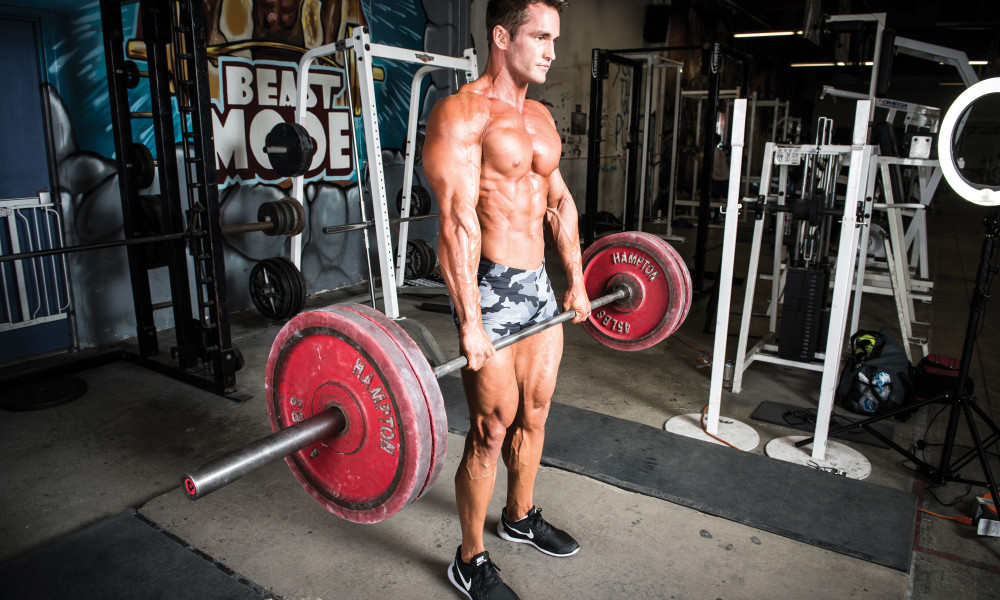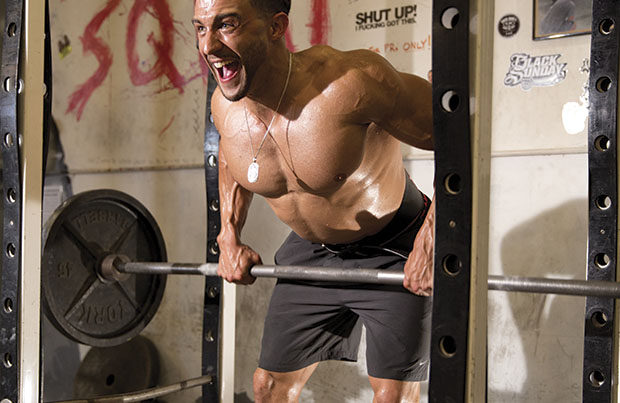

I’ve often talked about the importance of maintaining a balance of strength among the various muscle groups. That means paying attention to how all the muscles in your body are responding to the exercises in your program. This article deals with the relationship between the quadriceps and the hamstrings, also known as the leg biceps.
The hamstrings form the rear of the upper leg and consist of a long and short head—the magnus, semitendinosus and semimembranosus. The long head is also called the biceps femoris. It splits into two branches and inserts at the tibia and the fibula, the two bones that make up the lower leg. That tells us that the hamstrings overlap the knee joint, which in turn means they are responsible for stabilizing the back of the knee.
While hamstring development is beneficial to all athletes, it is absolutely essential to those who play contact sports. Powerful hamstrings help to protect the knees when they are hit hard, and they are needed for lateral, forward and backward quickness, applying a burst of speed and also for endurance. The ability to leap higher is dependant on having strong hamstrings, and the power created by the calves and other muscles of the lower legs must pass up through the hamstrings. If the hamstrings are relatively weak, that upward thrust will be hampered.
In order to protect the knees and to keep from pulling the hamstrings, you want to make sure that they never fall too far behind the quads in terms of strength. Neglecting the hamstrings can have dire consequences. If any antagonistic muscle group falls too far behind its opposite number and that group is placed under undo stress, an injury will occur. Pulled hamstrings are one of the most common injuries in sports. They are not only very painful to endure but also very difficult to rehabilitate. I only hurt my hamstrings once during my lifting career, but it took forever to bring that leg back to normal.
The ideal strength ratio between antagonistic muscles is often vague, but in the case of the hamstrings and the quads, it’s exact. It was determined a long time ago by those who studied applied anatomy that the hamstring should be at least 50 percent as strong as the quads. I believe it’s smart to make them even stronger than that. An ounce of prevention.
Few can meet that requirement, especially those just starting out on a strength program. Even those who have been training for some time often display relatively weak hamstrings. Hamstrings are, in fact, a generally neglected group. Why is that? Several reasons.
One is that they are located in the rear of the leg, so they’re not nearly as visible as the other parts. Out of sight, out of mind. People respond favorably when they can see the muscles work during an exercise. They can check out their quads while squatting, lunging and when they’re working them on a leg extension machine. Not so with the hams. Even when they do include an exercise aimed at the hams, they usually do it with lighter weights as an auxiliary movement.
The disparity in strength between the two groups occurs in nearly all beginners because they have developed their quads to a much higher degree than their hams from the running and jumping they’ve done in other sports and activities. The only group of athletes who come to the weight room with well-developed hams are volleyball players—a direct result of all the squatting they do when setting, digging and leaping.
For those who have been training for some time, the primary reason that their hams do not meet the standard of being 50 percent as strong as their quads is that they do not go low enough on squats. Doing partial squats increases the strength disparity between the two groups since the quads do 80 percent of the work.
How can you determine if your hams are half as strong as your quads? Do a set of leg extensions for 20 reps with as much weight as you can handle. Now do a set of leg curls with half that resistance. Few can do 20 reps. Some only manage eight or 10. Time to start hammering hamstrings.
If you haven’t been going low on squats, start doing so right away. At the same time add either good mornings or almost-straight-legged deadlifts to your routine. They’re the two best exercises for strengthening your hams. In the May and June ’13 issues of IRON MAN, I went into detail on the specifics of technique and programming. Now I just want to emphasize the importance of really learning one of those two exercises. That’s the only way to bring up your hams to where they’re in balance with the quads.
Almost-straight-legged deadlifts will help you build more strength in your hams than good mornings simply because you can use more weight, but you must hammer them. To achieve and maintain proportionate strength between the two groups, you must use 75 percent of what you squat for eight reps on almost-straight-legged deadlifts. So someone who squats 400 pounds is looking at doing 300 for eight. While that may seem unrealistic, it isn’t. Keep in mind that this is a goal to strive for and not something that’s done in the first month of training. It might take six to eight months to accomplish, but from that point on, it’s rather easy to maintain the percentage of using 75 percent of what you squat on this exercise.
For good mornings the formula is one-half of your best squat for eight reps. So our 400-pound squatter will finish his workout doing good mornings with 200 pounds for eight. As the squat moves up, so does the good morning.
Lunges are another excellent exercise for strengthening the hams. I really like them for athletes because they force both legs to work equally hard. That isn’t always the case for squats. Many lifters have adapted to shifting more of the load to their stronger leg when the going gets tough on squats. You can’t do that on lunges. As with the squats, however, you must do lunges fully. The trailing leg should be straight and almost touching the floor. Plus, you need to do them as a primary exercise, not an ancillary movement. That means working them hard and heavy.
Leg curls, on the other hand, are an ancillary exercise, and they can be most beneficial in helping to strengthen the hamstrings. Do the leg curls at the end of your workout, and vary the reps each time you do them: three sets of 20, three sets of 15 and three sets of 10. Push the final set to the absolute max. If your hams aren’t screaming for relief, you didn’t work hard enough. If you know that one leg is weaker than the other, do six extra reps for that leg on every set.
When you make your hamstrings stronger, you will improve on all your lifts that use the legs. You will also greatly increase your foot speed, endurance and leaping ability. Perhaps most important of all, you will reduce the risk of injuring your hams—and avoid a lot of pain and time spent rebuilding them. —Bill Starr
Editor’s note: Bill Starr was a strength and conditioning coach at Johns Hopkins University from 1989 to 2000. He’s the author of The Strongest Shall Survive—Strength Training for Football, which is available for $20 plus shipping from Home Gym Warehouse. Call (800) 447-0008, or visit www.Home-Gym.com.






















You must be logged in to post a comment Login